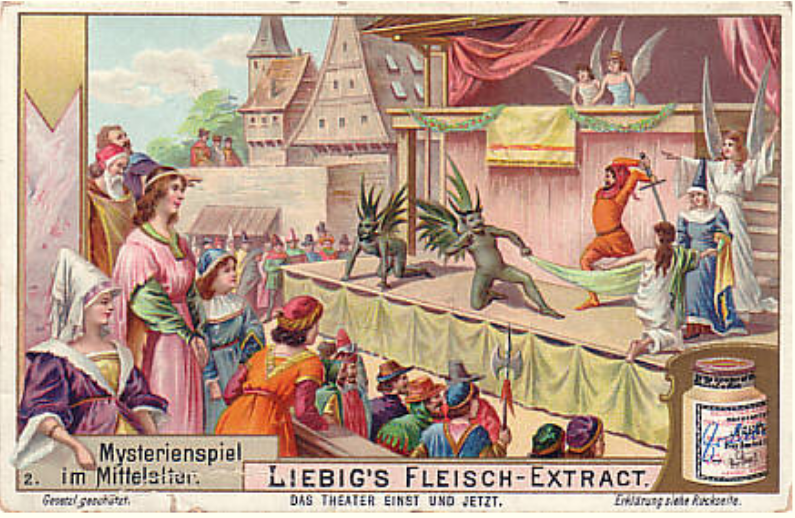Reposted from an Oregon ArtsWatch column that ran January 7, 2021, the day after the storming of the capitol.
***
JANUARY 7, 2021
On Wednesday the biggest show in America broke into new territory, adding a hard-right plot twist that raged across the nation’s television screens and Twitter feeds like a renegade character actor rushing into the spotlight and brandishing a sword. America’s actual theaters have been shut down for ten months. But the metaphorical theater – the great big blustering morality play of the body politic, screeching and bleating its lines in some hyperdrive version of a medieval drama – reached a new climax in Washington, D.C.
It had seemed, in the morning hours, that the old play had settled into its dénouement and the crew was ready to clear the stage to make room for the new show in town, the one with a familiar old star making a dramatic comeback in the leading role. In the halls of Congress the thunder sheets were rattling up one final mini-storm of protest as stock characters bellowed their closing curses to the sky, insisting to the end that night was day and the world was flat and the emperor was draped in dazzling costume. A mob of rabid groundlings, caught up in the raw fiction of the plotting and egged on by the antics of the morality play’s Ravening Beast, stormed the Capitol stage and attempted to turn the tide of the battle’s choreography with a show of brute force. But surely this was only show and tell?
And then the insurrectionists broke through. It was a shocking, if not surprising, violation of the fourth wall. The performers rushed into the audience space and transformed the measured fantasy of the script into a fresh form of ugly reality, looting and vandalizing and strutting for selfies. During the storming of the Capitol a woman was shot and killed. Four others also died, making it all too plain that the passions unleashed by the cheap theatrics had very real and serious consequences.
The worlds of politics and the theater have always been intimately linked. Political leaders build their bases and amplify their power by playing to the crowd. You could see and hear it, during the long television run of the day, in the soliloquies of some of the major players. Mitch McConnell’s deft and calculated turning of the screw. Lindsay Graham’s folksy yarn-spinning. Chuck Schumer’s earnest prosecutorial delivery. Josh Hawley’s fresh-off-the-bus sophistry. All delivered with studied theatrical poise – and then 45’s astonishing wreck of a mea non culpa, so palpably defiant and self-serving that social media companies blocked it, and him, though the television networks played it over and over again. In the midst of all this I found myself thinking, theater is like politics, and politics is like theater, but they are not the same, and it’s dangerous to mix them up. At a time of gross cultural and economic inequities, and pandemic health crisis, and racial and religious animosity, and a world plummeting toward climate disaster, it seems a very good time for the ladies and gentlemen of the hallowed halls to leave the acting to the professionals and get down to the tough but necessary business of actually governing. I’d buy a ticket to that.
***
How, then, should the worlds of art and politics interact? We’ve been seeing a lot of specific artistic responses to the political world, some of them blunt, some of them provocative, some of them good for the immediate moment and some of them, no doubt, with longer reverberation. The best approach might be to make art that explores the depths and complexities of human situations – not offering answers so much as fresh ways of thinking, so that political decisions can be made taking into account broader and more lasting ways of looking at things.
Barry Lopez, the great Oregon author of Arctic Dreams and Of Wolves and Men, died on Christmas Day at age 75, of prostate cancer. Everything he wrote, “major” or “minor,” was graceful and direct and suffused with a sense of the interconnections of the physical and cultural worlds. Always, he sought the whole picture, the things in front of us that most of us most of the time just don’t see. He might have been, not a politician, but an unofficial advisor to lawmakers, quietly urging them to see the details and hidden truths that make for sound decision-making. The other day I found myself leafing through Home Ground: Language for an American Landscape, a geological and geographical encyclopedia of sorts that was edited by Lopez and, as managing editor, his writer wife, Debra Gwartney. It’s a book of terms, from “alluvial fan” to “bog” to “promontory” to “salt-grass estuary,” that define and illuminate very particular physical realities.
In his introduction Lopez suggests the complexity of life on Earth, and the difficulty of truly seeing, a skill as necessary in public life as in the wild: “During a long period of field research that brought me into regular contact with wild animals on their remote home grounds, and after decades of living in a place where wild animals from deer mice and dusky shrews to Roosevelt elk and black bear are common, I’ve wondered what they see that we miss. Or what we so frequently miss because we are impatient and cursory. … Much that would be arresting to an animal’s eye is not apparent to us. How is the land we see divided and composed according to the way we see? What draws our attention?”
A little later I picked up another book by Lopez that I occasionally re-read, The Rediscovery of North America. Published in 1990, shortly before the 500th anniversary of Columbus’s incursion into the Americas, it’s essentially a long essay about that encounter, and the savagery and misunderstandings of it, and the ways in which its brutalities ripple down to our own time and influence how we think about things in our public and private lives. Calling partly on the testimony of Bartolomé de las Casas, who arrived in Hispañola in 1502 and later became a priest, Lopez relates in brutal detail the decades of “murder, rape, theft, kidnapping, vandalism, child molestation, acts of cruelty, torture, and humiliation” visited by the Spaniards on the Indigenous population.
Then he goes beyond: “I single out these episodes of depravity not so much to indict the Spanish as to make two points. First, this incursion, this harmful road into the ‘New World,’ quickly became a ruthless, angry search for wealth. It set a tone in the Americas. … The second point I wish to make is that this violent corruption needn’t define us. Looking back on the Spanish incursion, we can take the measure of the horror and assert that we will not be bound by it. We repudiate the greed. We recognize and condemn the evil. And we see how the harm has been perpetuated. But, five hundred years later, we intend to mean something else in the world.”
This might not make a sound bite for the Sunday morning news shows. It could make for a richer, more responsive and humane public policy. If the world of art can help the world of politics do that, maybe the Capitol won’t be stormed.

